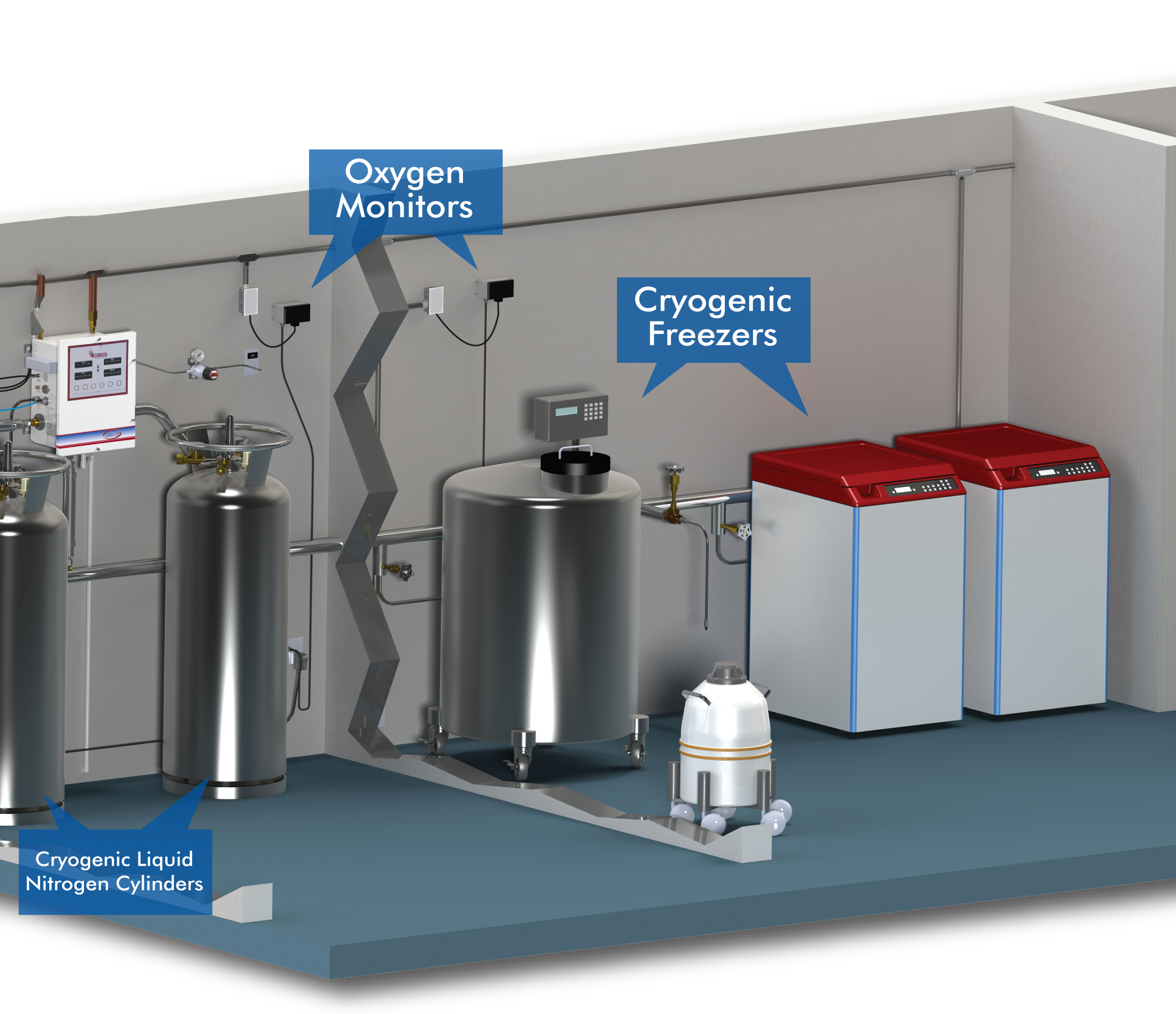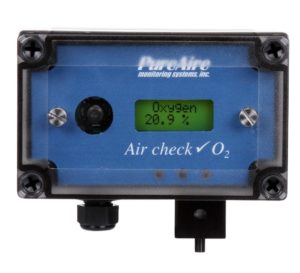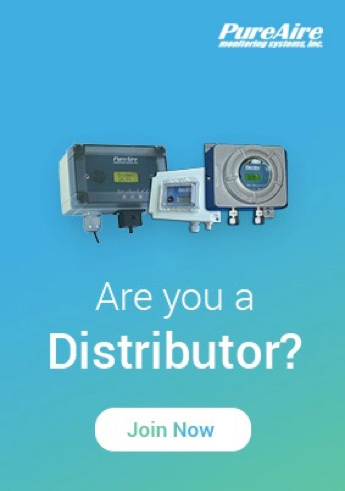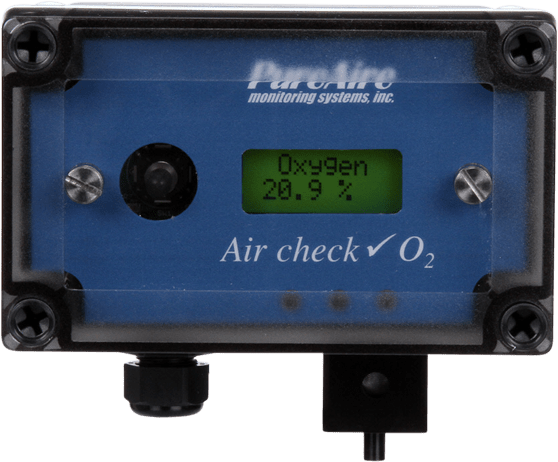Where Can I Buy an Oxygen Monitor?

You know you need an O2 monitor, but where do you get one, and how much does it cost? Selling oxygen deficiency monitors is our business, so we’ve rounded up information to choose the right oxygen deficiency monitor for your needs.
Who Should Use an Oxygen Deficiency Monitor?
An oxygen deficiency monitor should be placed anywhere that inert gases, such as argon or nitrogen, are used or stored. Industries that use an oxygen deficiency monitor include:
- Research & development – Laboratories often perform testing using nitrogen, argon, or CO2.
- Medical gases- Used in hospitals, or labs requiring ultra-purity (99.9%) inert gases or nitrogen gas.
- MRI facilities- Helium gas surrounds the MR magnet to protect from overheating while in operation.
- Pharmaceutical- Nitrogen is used in cryogenic freezers and CO2 or dry ice is commonly used for shipping heat sensitive prescription drugs.
- Cryotherapy– Nitrogen gas is used to create on-demand low temperatures quickly for therapy. Used for treating people to reduce inflammation.
- Cryopreservation- N2 gas is used in the process of cooling and storing cells, tissues, or organs at very low temperatures to maintain their viability.
- Universities- Many schools specializing in medicine, sciences, or aerospace require nitrogen gas, argon gas, or carbon dioxide for experiments and long-term research.
- Semiconductor- Ultra purity nitrogen gas or other inert gases are required to reduce corrosion and oxidation on wafers or in semiconductor tools.
- Food & Beverage- Nitrogen gas or CO2 is used to rapidly flash freeze food, or increase the shelf life of packaged foods and beverages.
- OLED– Nitrogen gas is used to reduce oxidation in printing chambers maintaining the quality of the substrate.
- 3D Printers– Argon gas and nitrogen gas are used in printers to reduce corrosion and protect metals from being a source of ignition, most commonly titanium metals.
What is an Oxygen Monitor Alarm?
An oxygen monitor alarm goes off if oxygen levels fall to a critical threshold, which is defined by OSHA as below 19.5 percent.
The type of alarm varies by the specifications of the oxygen deficiency monitor you’re considering. At PureAire, our oxygen monitors have two alarm levels, for 19.5 percent and 18 percent. The built-in alarm operates at 90 decibels, so workers can hear the alarm over facility noise. The optional horn and strobe combination amplifies the alarm.
Alarm relays link alerts with third party communication systems, such as control panels, PLCs, or fire alarm systems for maximum versatility.
How Much Does an Oxygen Monitor Cost?
Oxygen monitors range in price from $1,500 to $4,500, depending on if you need percentage or ppm accuracy.
Where Can I Buy an Oxygen Monitor?
Now that you understand the different features available in an oxygen monitor, as well as who should have an O2 monitor, you’re ready to research and buy. We’re partial to PureAire products, but we always recommend that you review the specifications of any oxygen deficiency monitor so you understand what features the product has and whether it’s right for you. PureAire includes a sensor lasting 10 year or more which is usually more desirable when you’re planning on using an oxygen monitor longer than 2 to 3 years.
You can buy an oxygen deficiency monitor online from the manufacturer, directly though distributors, and through commerce outlets as well.
PureAire works with various distributors such as Airgas, Air Liquide, Linde, Air Products, Fisher Scientific, and Johnson Controls.
One note of caution here, especially if you use the internet to research oxygen monitors. A number of products may come up when you search for O2 monitors that are NOT the correct product to detect gas leaks. You may find search results for the following products when you begin to look for oxygen monitors online:
- Finger oxygen monitor
- Blood oxygen monitor
- Pulse oximetry monitor
- Oximeter
- Baby monitor
As you may guess from the names, these other monitors are commonly used in medical and pharmaceutical settings. The price point will be far less than what you would spend for the type of oxygen monitor we’re talking about. The other oxygen monitors are also found in stores and online at pharmacies: Walgreens, Target, CVS, and the like.
When you review the product specifications, make sure the product you’ve found does what you need it to do: Monitor levels of oxygen in the air to detect a gas leak that could harm your facility and workers.
If there are other questions you have about shopping for an oxygen deficiency monitor, we’re here for you. Chat with us online or email us today.
Recent Posts
Надежда Гришаева И Anvil История Успеха И Расширения Возможностей
Nadezhda Grishaeva Exudes Happiness And Vitality While Leading A Vibrant Gathering To Commemorate Anvil’S Impressive Three Years Of Achievements In The Business Sector
Talk Dirty AI: Everything for Spicy AI Sex Chats
Talk Dirty AI: Start Chatting For Free On GirlfriendGPT
Why Are My Lymph Nodes Swollen?
Slottica Review 2024 Bonus, Free Spins & Games



